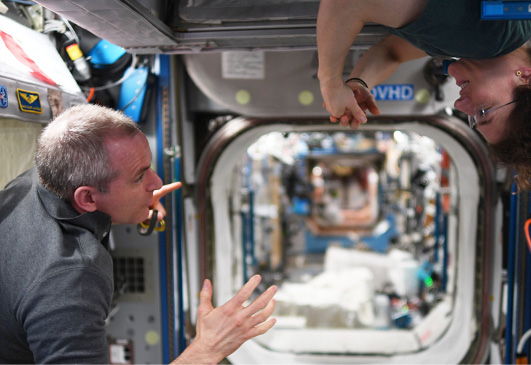
1. Introduction
Did you know that your classroom is like a habitat? It is like a habitat because it has its own environmental conditions!
Complete the following survey. Select the choices that best match how you feel about your classroom environment. Remember, there are NO right or wrong answers:
Be prepared to discuss your observations about the “environment” of your classroom.
2. Learning about Indoor Environments

Now it’s time to learn more about environmental conditions in indoor spaces.
Use information from the web links below, and others of your own choice, to research three or more of these indoor environmental conditions (variables):
- Temperature
- Relative humidity (%)
- Carbon dioxide (CO 2)
- Light
- Background noise
You can use the following graphic organizer to guide your research:
Questions you will be investigating:
- What is the unit of measurement for the variable?
- What tools can be used to measure the variable?
- How do people feel (mental and physical) if the variable is too high?
- How do people feel (mental and physical) if the variable is too low?
- What is the optimum range for the variable in a classroom?
- At what levels does the variable become dangerous to people? (i.e., too high or too low)
Web Links to get you started:
- Temperature on Earth and on the Space Station (Grade 6)
- Temperature on Earth and on the ISS (Grade 9–12)
- Relative Humidity on Earth and on the Space Station (Grade 6)
- Relative Humidity on Earth and on the ISS (Grade 9–12)
- Carbon Dioxide on Earth and on the ISS
- Light on Earth and on the ISS
- Noise on Earth and on the ISS
3. Data Collection
COZIR Sensor Array
You will now code the micro:bit and set up the COZIR sensor device. This will allow you to collect data on the environmental conditions in your classroom. There are two parts to setting up the COZIR sensor array—the software (coding) and the hardware (devices and wiring).
Software
You may choose to code the COZIR sensor array on MakeCode using either Level 1 code or Level 2 code.
Level 1
Level 2
Hardware
Review the document and/or instructions below to help guide the set-up of the COZIR sensor array:
The Let’s Talk Science custom COZIR sensor board attaches to a micro:bit using the alligator clips provided in the kit.
- Review the micro:bit safety instructions:
- Upload the Level 1 or 2 code to a micro:bit.
- Connect the COZIR sensor board to a micro:bit using the alligator clip jumper leads provided.
- Connect the sensor board to the 9 V battery provided.*
- Check to make sure that the alligator clip jumper leads are correctly attached and that a suitable power supply is being used.**
- The LED display should now begin to display values for classroom temperature, relative humidity and carbon dioxide.
* There should be only one power source for the COZIR sensor array. If using the 9 V battery provided, the micro:bit should NOT be connected to a computer or the micro:bit AAA (3 V) battery pack.
** The micro:bit AAA (3 V) battery pack will NOT work to power the COZIR sensor, which requires 3.5 V to run efficiently—the battery pack does not supply enough power.
Using the class sensor array, take measurements in your classroom for:
- classroom temperature (°C)
- classroom relative humidity (%)
- classroom carbon dioxide (PPM)
You will take measurements and record them at the same time of day over three days (e.g., 9:00 a.m. Monday, 9:00 a.m. Tuesday, 9:00 a.m. Wednesday).
Record your classroom measurements in a notebook or using the form below:
4. ISS Data Collection
In addition to collecting data from your classroom environment, you will also be obtaining data about the environment on board the ISS.
Look at the graphs below to find data for ISS temperature (°C), relative humidity (%) and carbon dioxide (PPM). You will need to record this ISS data at the same time as measurements are collected in the classroom.
Record the ISS data in a notebook or using the form below:
Scientific observation often requires collecting and recording data samples from different points in the day. Below are graphs of the current temperature, relative humidity and carbon dioxide for the International Space Station (ISS) vs. a typical classroom reading.
Hover over the graph below to get the precise environmental values for the current period of day (a.m., midday, or p.m.). The values shown are adjusted to your local time zone.
Using the left side of the charts, record the date, period of day, and values shown, and then enter this into the national shared data set. The right side of the chart gives you a standardized comparison point (typical classroom).
Environment Data (Charts)
Morning Data
Midday Data
Afternoon Data
Morning Data
Midday Data
Afternoon Data
5. Data Upload
Ask your teacher for details on how and when to enter the data that has been collected about the environmental conditions in your classroom and on board the ISS.